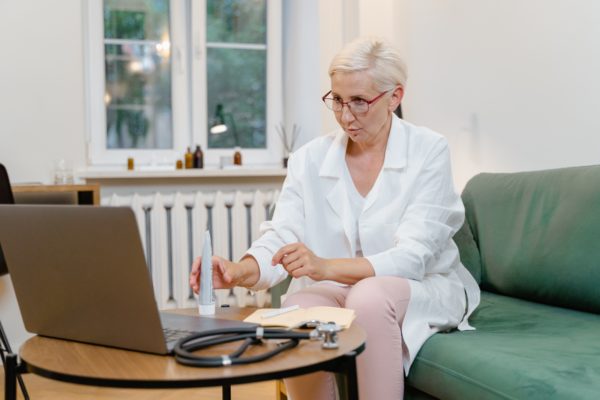
Bringing Tomorrow’s Innovations to You Today
For the most innovative and highest-quality dental instruments choose Strauss Diamond, where innovation, quality, and education are our priorities. Our dental instruments are in use

It is unsurprising that the epidemic has pushed the adoption of telemedicine in the medical and dentistry fields. Virtual care has barely touched the surface of its possibilities in teledentistry as dental offices learned to navigate lockout procedures, expanded safety processes, and assuaged patients’ anxieties of being exposed to the disease via the dental office. By the conclusion of the decade, the market is estimated to be worth $2.6 billion.
Despite the fact that teledentistry has historically not been broadly accepted in the dental career field due to reimbursement limitations, it has intrinsic worth as we continue to navigate the global epidemic and its virus variants.
Over the last 18 months, telehealth acceptance has grown increasingly important in eliminating oral health inequities and enabling dentists to provide patient-centered and value-based care.
Here are some of the benefits of teledentistry for your dental clinic and patients:
Aftercare is an important element of teledentistry. For example, a customer who had a tooth extracted can use a telehealth visit to ensure that everything is healing properly on follow-up. The added value for the dentist is decreased overhead because patients do not have to come in for their visits, avoiding the requirement for room setup and sterilization, as well as the need for cleaning and sanitation of chairs, tables, and tools. A dentist might simply ensure the patient’s recuperation with a digital consult by using pictures or video communication. There is no need for more personnel, room preparation, prior and subsequent sterilization or cleaning.
While most of us in the United States have dental services, there are still rural communities and worldwide locations that have dental care shortages. Teledentistry is an ideal choice for patients who live in remote areas with limited access to dental care, as well as those who must travel long distances by vehicle or aircraft to obtain treatment.
Furthermore, seniors who have mobility or transportation challenges may benefit immensely from an online visit option. Caregivers or adult children can help supervise teledentistry technology by utilizing a mobile phone or computer, which can help seniors understand if they need in-person care and when they may be able to delay it.
Some patients are terrified. For many people, going to the dentist is a source of dread. The sound of the drill or the scents in the dental office can also cause anxiety in certain people. While telemedicine cannot substitute a tactile or direct visual diagnosis, it is preferable to nothing for people who are hesitant to visit the dentist at all.
In fact, a telemedicine visit could provide reassurance to a worried patient. It can be a first step in making patients feel at ease with the dentist, establishing a relationship (virtually), and preparing them for a thorough in-person exam. Stress-related symptoms including bruxism and clenching have been on the rise since the pandemic began. According to an American Dental Association survey, 60% of dentists are seeing a surge in patients with clenching and grinding problems, implying that pandemic-related stress is to blame. 3 Diagnosis of these stress-related dental disorders may be aided by a teledentistry appointment.
As virtual dentistry evolves, implementing it now will not only improve patient care options today but will also position you to take advantage of future technology solutions.

For the most innovative and highest-quality dental instruments choose Strauss Diamond, where innovation, quality, and education are our priorities. Our dental instruments are in use

When running a dental practice it can be challenging to make your patients feel comfortable. After all, the fear of going to the dentist is
© 2021 StraussDiamond Return Policy Privacy Accessibility
